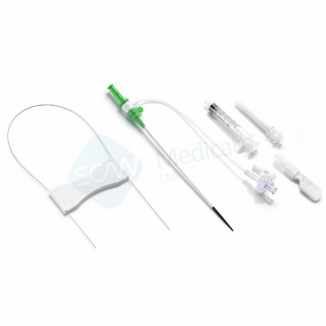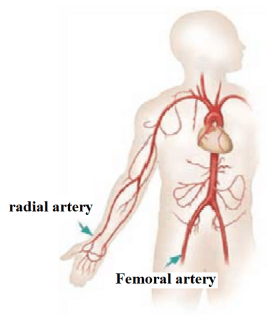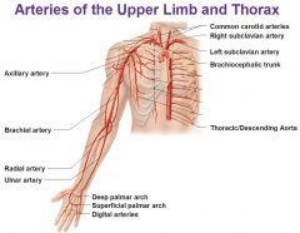We'd Love to Hear From You
Curious about product features, price quote, registration, delivery time, etc? We're ready to answer any and all questions within one business day.

Vascular interventional technology is an operation technology for diagnosis and treatment through blood vessels under the guidance of medical imaging equipment and using instruments such as puncture needle, guide wire and catheter. Conventional vascular intervention mainly includes balloon dilatation, stent implantation, catheter thrombolysis and mechanical thrombectomy et al. Arterial puncture is the first step of interventional surgery. At present, the commonly selected puncture arteries are radial artery and femoral artery. Rapid and accurate puncture is the key to the success of the operation.
Percutaneous coronary intervention via femoral artery is the most classic and widely used route. Compared with radial artery puncture, femoral artery puncture technology is relatively simple, and even beginners can master it quickly. Secondly, the internal diameter of the femoral artery is large, and the catheter you want to use can be used arbitrarily, which can ensure that the vascular pathway is not damaged while quickly sending the instrument, so as to save the time of surgical operation. However, the disadvantages of femoral artery puncture are also obvious. There are abundant blood vessels and nerves in the groin, which is prone to accidental injury. For example, there are femoral veins in the femoral artery and femoral nerves outside. 5% ~ 10% of patients have complications after local puncture of blood vessels, including bleeding, hematoma, pseudoaneurysm, arteriovenous fistula, nerve injury, etc. In particular, there is a risk of retroperitoneal hemorrhage, which can lead to death in severe cases. In order to reduce bleeding complications, patients often need to be forced to stay in bed for a long time after operation, with long recovery time and long hospitalization cycle, which is not conducive to saving human resources and strengthening the utilization rate of hospital bed, and causing unnecessary increase in medical expenses. The wound of groin is also easy to be polluted, and the incidence of local complications is higher than that of radial artery puncture.

Since the completion of the world's first transradial coronary angiography and subsequent transradial intervention in 1989, transradial intervention has become more and more popular. Compared with transfemoral artery, transradial intervention has many obvious advantages. First, there are no large veins and nerves near the puncture point of radial artery, and there is Allen's ring collateral circulation between radial artery and ulnar artery, so the probability of arteriovenous fistula, nerve injury or hand ischemia is very small. Secondly, patients receiving radial artery puncture and interventional therapy can immediately remove the sheath and wrap it up, which reduces the possibility of deep venous thrombosis and pulmonary embolism caused by long-term bed rest, and is conducive to the postoperative rehabilitation of patients. Because the patients receiving radial artery puncture recover quickly after operation, the hospital stay can be greatly shortened, and even can be carried out in the outpatient department, so the medical cost is greatly reduced. At present, the use of 6F guiding catheter through radial artery can complete almost all complex interventional procedures. Most surgeons have taken transradial artery puncture as the first choice of percutaneous coronary intervention.
Although transradial introducer set is widely welcomed by coronary intervention doctors, it still has some problems. The diameter of radial artery is thin, and it is also one of the most spasmodic muscular vessels in the human body. Therefore, radial artery puncture is very easy to fail because it can not stab the blood vessel and cause arterial spasm caused by repeated stimulation. Even after the radial artery puncture and sheath insertion are successful, the pushing of the instrument sometimes causes the spasm of the radial artery and upper arm artery, resulting in the failure of intervention. In addition, the tortuous approach of upper arm and subclavian artery during radial artery puncture is also an important reason for the failure of interventional therapy.

SCW MEDICATH LTD, established in 1996 and headquartered in Shenzhen, is the first factory to develop and manufacture Central Venous Catheters, Blood pressure Transducer, and many other products in China. As a professional medical manufacturer, SCW has specialized in Intervention, Anesthesiology & Critical Care, Obstetrics & Gynecology, Urology, Medical Imaging, Orthopedics, and other high-value medical consumables. At present, more than 60 domestic registered products and more than 30 CE certified products. SCW is certified by ISO13485 Quality System Certificate and CE Certificate. SCW products are sold across China and exported to over 80 countries and regions. For more information about transradial introducer set, please do not hesitate to contact us.